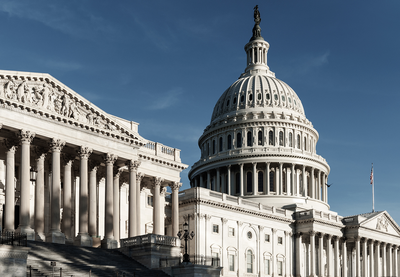Yesterday, as armed insurgents flooded into the United States Capitol and news reports showed elected officials and staff locked down, barricaded in offices and even on the floor of the House, we encouraged educators to offer in-the-moment support to students.
We offered some recommendations for psychological first aid, including listening, protecting, modeling—and remembering to care for yourself.
We know that yesterday’s events are ones we’ll all likely return to in the days and months to come. The way white rioters were treated by law enforcement, the pervasiveness of antisemitic and racist slogans and symbols, the obvious entitlement of those attacking the capitol, and the clear backlash against recognizing the rights of Black voters are all facets of white supremacy that will need to be unpacked.
But this week, as students continue to process, we hope you’ll continue to make space in your classes for discussing what happened—and what students need.
To offer a bit of support for that, we reached out to our advisory board to find out how they’d begin these conversations. Here’s what they shared:
Structured Listening
“With my 3rd to 5th grade students, I am prepared to do an exercise in listening. ... It seems as if many people have strong feelings or opinions that they don’t feel are being heard, and I want to demonstrate (on a very small scale) the power of being listened to.
“[They’ll work in groups of] 4 to 6 students. Each student will be given three minutes to speak uninterrupted, responding to a prompt of something along the lines of ‘What is weighing on you right now?’
“They have the full three minutes to express themselves and the other members of the group will simply listen. They will not try to offer advice or ‘fix’ anything for that person.”
Letting Students Lead
“In my district, it is taboo for teachers to initiate controversial discussions that are not yet approved. I plan to just say ‘Yesterday was a DAY!...’ and follow my kids’ lead. Inevitably someone will chime in. I always respond to students’ comments with ‘yes, some folx believe/ feel that way...can you tell me more?’ I stay calm and keep my voice low, especially when students start to raise theirs.
“Students who don’t want to speak but are visibly shaken can draw, take notes or doodle, and are invited to share if comfortable. No one is put on the spot.”
Essential Questions
“These essential questions can spark and guide student discussion:
- What do you think about the events that took place at the U.S. Capitol yesterday?
- What would you like to know more about or understand more about the events that happened yesterday at the Capitol?
- How do different people or groups of people represent and express their power?
- What does a just use of power look like?
- What basic freedoms are required by a just society?
- When might one person’s freedom violate another’s?
- How do you think we can all stay safe during this time? What should we do?”
Starting with Truth
“Right now, there is a lot of information being shared from so many platforms. I’d start by sharing the truth about what is transpiring.
“Then, hold space for questions—while allowing other students to answer some questions so that it can authentically become a dialogue.
“Lastly, I would hold space for emotions like anger. It is really difficult to accept that the government only condones maximum force and violence against Black and Indigenous people when standing up for our rights to live and thrive.”
Additional Resources
Here are a few other resources our advisors recommended:
- Responding to the Insurrection at the U.S. Capitol
Facing History and Ourselves - What Are Your Reactions to the Storming of the Capitol by a Pro-Trump Mob?
The New York Times - Resources for Teachers on the Days After the Attack on the U.S. Capitol
Beyond the Spotlight
TTAB Contributors: Maribel Gonzalez, Amy Melik, Alicia Oglesby and Julie Bradley
Editor’s Note:
This article was revised January 8, 2021, with updated links addressing antisemitic and racist symbolism in the attack on the Capitol.
